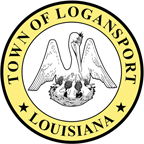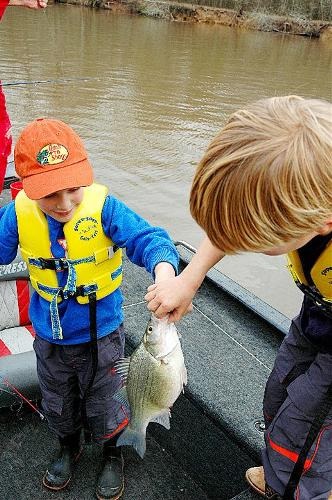A Town and its Beginning
The Town of Logansport began because of its proximity to the Sabine River. The Sabine begins its trek south in northeast Texas. The union of three branches: The Cowleech Fork rises in northwestern Hunt County and flows to the southeast for 35 miles. The Caddo Fork rises in two tributary forks, the East Caddo Fork and the West Caddo Fork, in northwestern Hunt County. The South Fork rises in the southwestern corner of Hunt County and flows east for 18 miles, joining the Caddo Fork and Cowleech Fork in southeastern Hunt County. The confluence of the forks is now submerged in the Lake Tawakoni reservoir. The combined river flows southeast across northeast Texas and is joined by a fourth branch, the Lake Fork 40 miles downstream from the reservoir.
In northeast Texas, the river flows past Mineola, Gladewater, and Longview. At the 32nd parallel north, the Sabine River establishes the Texas-Louisiana boundary. It flows south, forming the state line for the remainder of its course. It is impounded 10 miles west of Leesville, Louisiana to form the 70 mile long Toledo Bend Reservoir, with the Sabine National forest along its western bank. South of the reservoir it passes through bayou country, surrounded by wetlands, as well as widespread industrial areas near the Gulf Coast. Approximately 10 miles south of Orange, Texas, it meets the Neches River from the west to form 17 mile long and 7 mile wide Sabine Lake, which drains through the Sabine Pass to the Gulf of Mexico. The city of Port Arthur, Texas sits along the western shore of Sabine Lake.
The history of the Sabine begins with Archeological evidence indicating the valley of the river was inhabited as far back as 12,000 years ago. Starting in the 8th century Caddo Indians inhabited the area. Arrowheads have been discovered all along the Sabine River banks. The river was given its name in 1716 by early European explorers and appeared as Rios de Sabinas on a 1721 map. Used by French traders, claimed by France and Spain until acquired by Spain in 1763, the capital of the Spanish province of Texas was established on the east side of the Rios de Sabinas, near Robeline, Louisiana. After the Louisiana Purchase by the United States in 1805, this indefinite boundary between the U.S. and Spain led to an agreement on November 6, 1806, negotiated by Gen. James Wilkinson and Lt. Col. Simon de Herrera, to establish a neutral territory, “the infamous no man’s land”, on both sides of the river. The indefinite boundary was resolved by the Adams-Onis Treaty of 1819, which established the river as the boundary from the Gulf to the 32nd parallel. The first American settlers began arriving in the region in the 1820’s. The Sabine River served as the western boundary of the United States until the Texas Annexation in 1845.
In the 1840’s, river boats began navigating the river. Thus began the importance of Logan’s Ferry to the area near this site. Riverboats would travel north up the river to Logan’s Ferry bringing much needed supplies and carry goods, wooden staves and cotton south to markets in Orange, Texas.
In the late 19th and early 20th century, the middle course of the river became the scene of widespread logging. The discovery of petroleum at nearby Spindletop led to the river basin becoming the scene of widespread oil drilling.
Logan’s Ferry became Logansport. The Toledo Bend Reservoir was built and Logansport is the DeSoto Parish Community located on its banks. The Sabine River at Logansport is a vibrant area of activity, as the Town of Logansport embraces the river and its resources. Visit the Town of Logansport’s Riverfront Park, walk through the Historic Cemetery, and the Town of Logansport; it is an area rich in history and the downtown Main Street area has many Historic Buildings and friendly residents.

